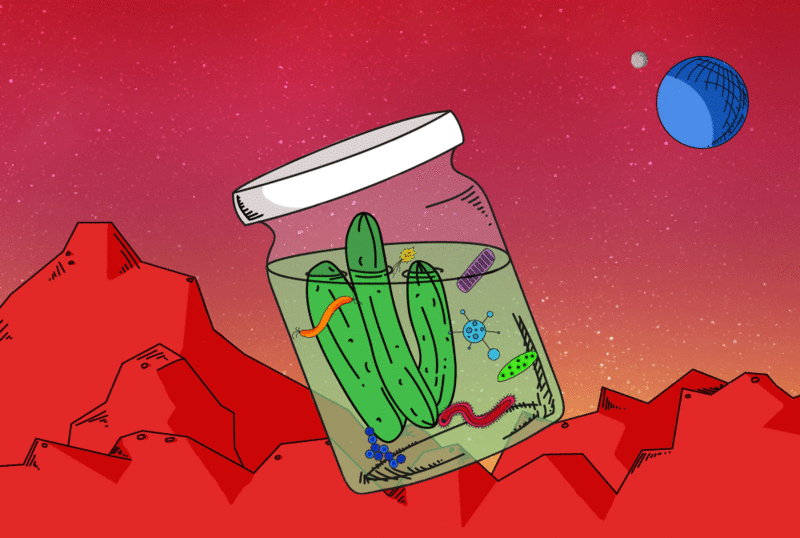Author: Sarah Laskow / Source: Atlas Obscura

Deep under the ice cap of Mars’s southern pole, there could be a store of water, the first stable body of liquid water ever found on the planet. After the paper announcing this discovery came out, reporters described a “lake of liquid water,” about 12 miles in diameter. Hearing that phrase, it’s easy, perhaps even natural, to imagine a bubble of crystal-clear water, hidden under the cap of frozen water and carbon dioxide, pure and sweet and waiting.
But the reality would be less appealing. The pressure of a mile-thick layer of ice changes the conditions under which water can be liquid, by decreasing its freezing point. Even so, to stay liquid at around -90°F, the “lake” would have to be a briny layer of water, rather than a pool of pure (or even drinkable) water.
Briny water has its uses, though. For instance, what if Martian water was used to make pickles?

On Earth, going back centuries, brines made with salt (the NaCl kind) and other chemical compounds, such as calcium chloride, have been used to preserve food. Sugar is an energy source for microbes, and if the wrong ones start feasting on a vegetable, it becomes unfit for human consumption. But salt can cultivate an environment that only certain desirable bacteria can survive. The salt also helps leach sugars from the cells of the vegetable, and the bacteria consume the sugar and excrete lactic acid. Many microbes also have a problem tolerating acidity, so the acid also keeps at bay microbes that are undesirable (for the purposes of human consumption, at least).
Ultimately, pickling is meant to deal with the microbes that were already living in and on the vegetables and that, given a chance, would create rot or mold or otherwise make the vegetable inedible.
“The purpose is to eliminate the indigenous microbiota, essentially,” says Ilenys Perez-Diaz, an associate professor of food science at NC State University.Too much salt, though, can stop advantageous bacteria from working. It can still keep the food from rotting away—ham, for instance, is preserved simply by adding a ton of salt—by stopping all microbial growth. If the goal is preservation through fermentation, though, too much salt can slow the process down to a crawl. Also, there’s a limit to how much salt a person can take, and an overly salty brine can make pickles inedible.
The Mars water would definitely be too salty to survive for the lactic acid bacteria that are key to Earthling pickling processes. Measured in “practical salinity units,” ocean water has a salinity of around 35 PSU; the Dead Sea has a…
The post Cool, There’s Water on Mars. But Does It Make Good Pickles? appeared first on FeedBox.